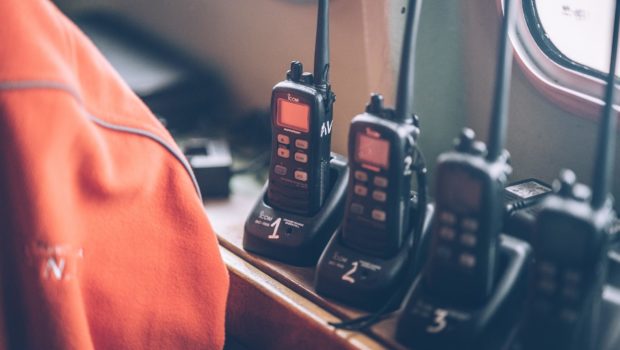What is the Range of Walkie Talkies? And How to Extend it?
Walkie talkies still provide for the most reliable communication channel around the world. As they are sturdy enough to work through the roughest terrains and they can tune in various frequencies to secure a stable connection. They are an integral part of any event planning. There are companies that offer walkie talkie hire so that event organizers can rent them instead of buying them. However, if you’ve ever had the question in your mind that ‘what is the range of walkie talkie? and how to extend it?’ then we can walk you through everything you need to know.
Generally, a walkie talkie has a range of around 3 miles where there are obstacles. Even so, you can extend this range to 20-40 miles by using a GMRS radio, but it will require a license in most cases.
Along with it, there are other dominating properties affecting the transmission range. This guide will discuss them to help you evaluate how accurate is the range promised by the radio manufacturers. And how by taking care of a few factors you can transmit through your radio at wider distances.
What Determines the Range of a Walkie Talkie?
Many manufacturers advertise their products as long distance walkie talkies by claiming the transmission range of ideal condition. The ideal condition is when the signals are propagated in an open area where there are no obstacles. Also, when the environmental factors are minimum, and there is only air carrying the radio frequencies.
However, the reality is converse. A possibility is that the radio signals might need to penetrate through various obstacles in different environmental conditions. Therefore, to determine what the transmission range would be in normal condition, one should take care of these three factors:
1. The Output Power
For transmission range, the rule is simple – the more the power of radio, the more frequency it will radiate. As the walkie talkie will deliver more energy to the radio frequencies; hence, the signals will be radiated with more power through the antenna.
Generally, the output power of radios is around 2 to 5 Watts as they install a small battery. So, if you want your radio to transmit through wider distances, aim for the one having high power output.
2. The Frequency
In the market, you can find radios operating on UHF, VHF or both types of frequencies. The Very High Frequency (VHF) walkie talkies are ideal for outdoor locations. These frequencies can travel through large distances even at small power outputs.
Nevertheless, what the VHF (136-174 MHz) radios lack is transmitting through buildings or concrete. For this, the Ultra High Frequency (400-470 MHz) radios are perfect. These walkie talkies are best to penetrate through obstacles but their transmission range is constrained.
Also, the radios generally operate on two services regulated by FCC, namely FRS (Family Radio Service) or GMRS (General Family Radio Service). The FRS is a permit free service with 22 standard frequencies that can be tuned in with a 2 Watts radio. In contrast, the GMRS services require a license, and they generally operate on a 5-Watt radio which extends their transmission range.
A pragmatic solution is to buy a radio transmitting on both UHF/VHF frequencies along with FRS/GMRS services. With all the qualities integrated into a single radio, you can enjoy communicating all over.
3. The Type of Antenna
Both the transmitter and receiver will work efficiently only if you have an antenna good enough to radiate and catch radiations. You can find either directional or omni-directional antennas. The former, radiating signal in one direction only and the latter transmitting signals everywhere.
In brief – the antenna installed can affect the communication range at the end of a transmitter as well as a receptor.
The 4 Simple Ways to Extend the Range of Your Walkie Talkie
1. Operate through Elevated Sites
Transmitting through higher altitudes allow the radio waves to travel more efficiently as the obstacles in their way reduce. Also, given that for every mile, the curvature of Earth changes around 8 inches, traveling a few miles will have a significant impact on the transmission range.
Therefore, the higher you get, the more change will occur in the center of curvature which will, in turn, increase the transmission range.
2. Hold the Radio Straight
The signals radiate perpendicularly through the antenna in the atmosphere. If you carry the radio upright straight, the frequencies emitted will travel equally in all directions. In contrast, holding the radio toward your face or at an angle will lead to irregular propagation of the RF signals.
3. Keep a Check on the Batteries
Although buying a high watt radio will affect the transmission range, but without a quality battery, the results will be unfruitful. If your radio operates on AA batteries, make sure their strength is high. As a weak battery delivers less power to the radio which consequently generates weak signals.
You can use a battery tester timely to inspect whether the battery is fresh or not. Also, the rechargeable batteries tend to impart more strength to the radio. However, they are not appropriate for remote locations.
Therefore, buying radios working on both rechargeable and non-rechargeable batteries is better to make sure you always have a power backup.
4. Install a Radio Repeater
The radio repeater boosts the signal generated by the walkie talkie by receiving them and re-sending them with upgraded power. This results in increasing the transmission range at locations where there are hindrances.
This is done by the repeater stations located on high elevations around your area. So, when they receive a signal, they re-transmit it at wider distances with clarity.
Conclusion
The transmission range claimed by the walkie talkie manufacturers is practically unattainable, as you don’t always plan to operate your radio on a bluebird day out in the ocean. To estimate the range of radio in normal conditions, you need to consider various influencing factors.
Besides, you can increase the range of the radio by following the measures mentioned in the article. Nevertheless, to experience transmitting at its best, you need to buy the premium two-way radios to make sure you don’t run out of connection while venturing at a mountain or forest.
















